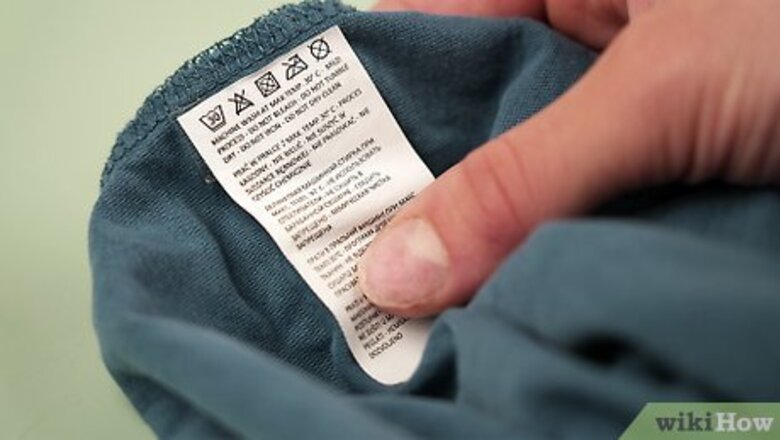
views
- Separate your laundry and pre-treat any stains with a color-safe remover.
- Swish your clothes around in lukewarm water mixed with mild detergent.
- Let your clothes soak for up to 30 minutes. Rinse out the detergent with clean, cool water after.
- Gently squeeze water from your clothes before laying them flat on a towel to air-dry.
Check the care labels for cleaning instructions.
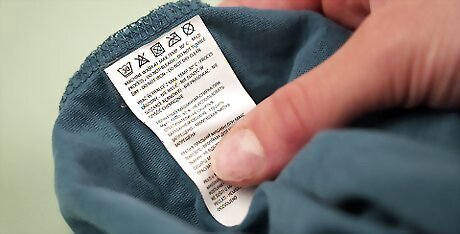
The tags on your clothes tell you the best ways to clean them. Read through the tag on each garment that you’re washing to see what fabric it’s made from and how to clean it properly. Keep similar fabrics together so you can wash them at the same time. Anything that can go in your machine or that has a “hand wash only” label is safe for hand-washing. If a tag says “dry clean only,” then avoid hand-washing that garment to avoid damaging it. As a quick way to check if your garments are safe to hand-wash, place a drop of water on the fabric and blot it up with a paper towel. If the color runs or bleeds, then take it to the dry cleaners.
Separate your clothes by color.

Washing similar garments in the same load prevents colors from running. Sort your laundry so all the light fabrics are separated from the dark ones. Since darker colors could potentially discolor the water, wash the lightest colored clothes first and save the darker ones for last. If you have a new item of clothing that is dyed or colored, wash it separately in a different tub or basin so the color does not get on other clothing.
Pre-treat stains with a color-safe remover.

Using a stain remover beforehand makes it easier to wash out. Apply the stain remover directly over the mark on your clothes. Gently dab the stain with your fingers or brush it lightly with a new toothbrush to work the cleaner deeper into the fabric. Let the stain remover sit for about 10–15 minutes before you wash your garment. Test the stain remover in a small inconspicuous spot on your clothes before applying it directly to the stain.
Add water and mild detergent to a tub or sink.
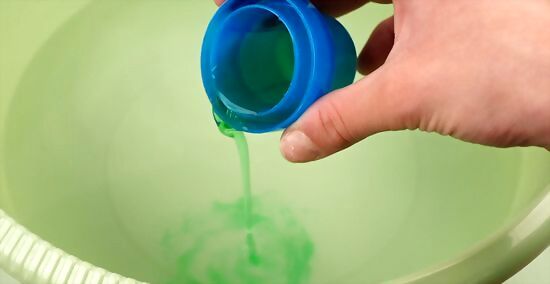
A mild detergent meant for delicates cleans clothes more gently. Use your bathtub, sink, or large bowl depending on how many clothes you need to wash. Stick with cool or lukewarm water when you wash your clothes to prevent colors from running. Mix about 1 ⁄2 fluid ounces (44 ml) of detergent into the water until it’s completely dissolved and forms suds. Wool and fine knits: Use cold water and wool detergent to keep the fabric soft. Silk or lace: Try a no-rinse detergent to limit how much water comes in contact with the fabric. Alternatively, use mild liquid dish soap if you’re in a pinch.
Swish your clothes around in the soapy water.

Gently stirring the water is less damaging to clothes than scrubbing. Drop your first load of clothes into the water so they’re submerged. Then, use your hands to gently move the clothes around to wash out the dirt between the fibers. Keep agitating the water for about 2–3 minutes, or until the clothes look clean. Sweaters: Turn sweaters inside-out before washing them to clean them better. Avoid scrubbing, twisting, or rubbing your clothes together when you hand-wash them since you could stretch and damage the fabric. EXPERT TIP Susan Stocker Susan Stocker Green Cleaning Expert Susan Stocker runs and owns Susan’s Green Cleaning, the #1 Green Cleaning Company in Seattle. She is well known in the region for outstanding customer service protocols — winning the 2017 Better Business Torch Award for Ethics & Integrity —and her energetic support of green cleaning practices. Susan Stocker Susan Stocker Green Cleaning Expert When you're hand-washing clothes, be careful not to scrub them too hard. If you do, you can damage the fibers, rip the item, or make them look stretched and threadbare. Also, be sure to pay extra attention to areas such as the underarms, and let the garments soak in the water long enough for the detergent to break up any dirt or oil.
Soak your clothes for 10–30 minutes.
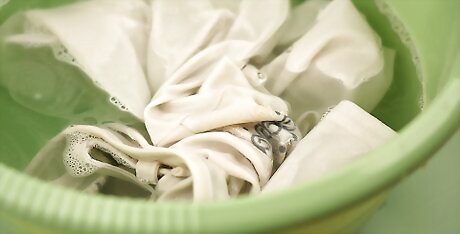
Soaking helps lift dirt and stains deep in the fabric. Leave your clothes submerged for at least 10 minutes so the detergent has time to work through the fabric. If your clothes are really dirty or have stubborn stains, leave them in the water for up to 30 minutes so it’s even more effective. It’s normal for the water to darken as dirt lifts out of the fabric. If the water ever looks really cloudy or dirty, empty it out and refill your container.
Rinse your garments with clean water.
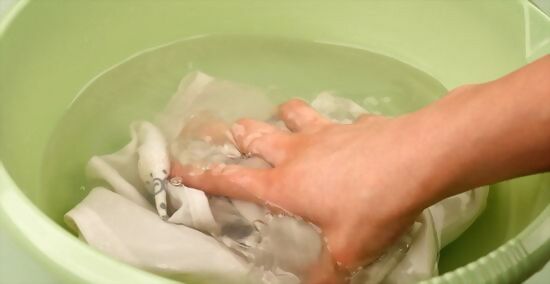
A thorough rinse removes all the detergent and leftover dirt. Either empty out your container and refill it with clean water, or hold your garments underneath a running faucet. Gently squeeze your clothes as you rinse them until you don’t see any more suds coming out. Alternatively, fill a second container with clean water and transfer your clothes over to rinse them.
Squeeze excess water out of your clothes.
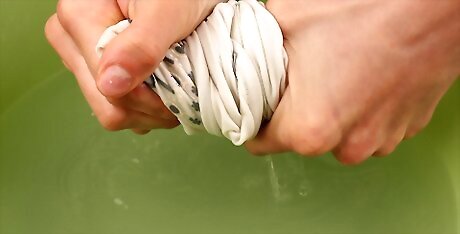
Gently squeezing your clothes prevents them from stretching. Hold your garments above the water when you squeeze them so you don’t drip. then, lay your garment flat on a towel and slowly roll the towel up to squeeze out even more water. Avoid twisting or wringing out your clothes too forcefully since you’ll stretch or damage the fabric fibers.
Lay your clothes on a towel to air-dry.
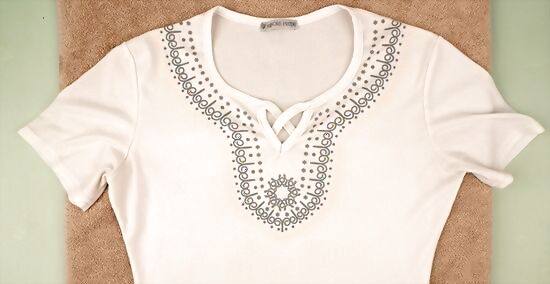
Drying your clothes flat helps them preserve their shape. While T-shirts and pants are safe to hang dry, delicate fabrics could stretch or distort. When you’re washing sweaters, silks, bras, or lingerie, spread the garments flat so they’re shaped correctly. Keep them in a well-ventilated spot and flip your clothes over after 1–2 hours so the other side can dry. Turn a fan on in the same room as your clothes to help them dry faster. Avoid putting your clothes in the dryer unless the care tag says it’s safe. Otherwise, your clothes may get damaged or shrink.



















Comments
0 comment